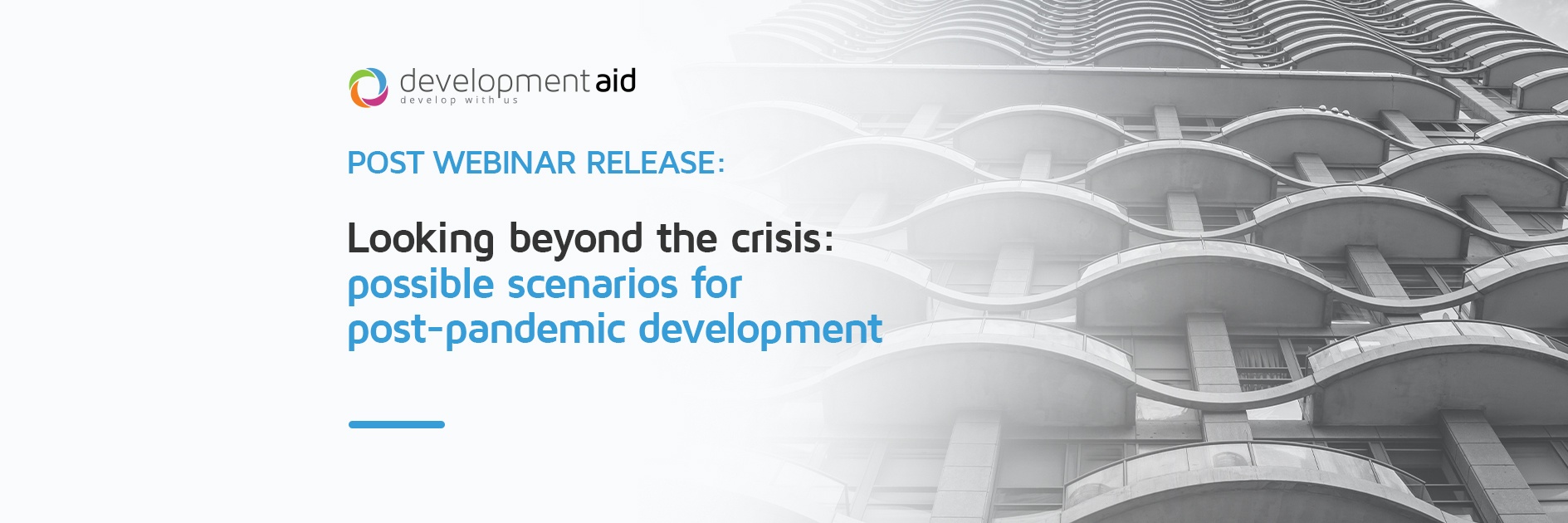As the pandemic has now turned the world as we knew it into a “never normal”, strategic foresight has become a must as part of the decision-making process in any organization, a vital tool for (public) organizations to anticipate and better prepare for change. There is a need to “break out of the bubble” and start engaging with other sectors and people with different paradigms when practicing strategic foresight. These are just some of the conclusions reached during a DevelopmentAid seminar whose invitees Alanna Markle (Strategic Foresight Analyst with the OECD) and Vicky Tongue (Head of Futures and Innovation at International Civil Society Centre) shared their expertise on strategic foresight and its role in pragmatic decision-making during a thematic webinar.
Given the importance of strengthening the use of foresight and future thinking, the OECD has a special Strategic Foresight Unit that is directly responsible for this topic. Alanna, who serves as an analyst within the unit, pinpointed that, as a set of structured and systematic activities, strategic foresight is not used to predict or forecast the future, but rather to explore and prepare for alternative plausible futures.
In her view, responsible decision-making requires foresight as this allows organizations to design strategies that enable them to be more resilient to future shocks and disruptions but also offers the ability to identify and capture novel opportunities. One of the most popular methods of practicing foresight relates to scenario building. In this context, scenarios can be seen as simulations or prototyped versions of the future based on weak signals and emerging trends.
Fig.1. Elements of Strategic Foresight

Alanna invited all interested parties to reflect on the possible drivers of global change and think about how these could affect the global development landscape in the next 10 to 15 years. She kindly shared several tips to apply when practicing strategic foresight.
Tips for successful foresight interventions:
- Horizon scanning is the foundation
- Look outside your system
- Explore crazy ideas
- Measure impact as changed ideas
- Aim for broad and inclusive engagement
For its part, the International Civil Society Centre has recently produced a sector guide that provides five strategic pointers that are designed to assist organizations with decision-making in times of uncertainty. Vicky Tongue focused on two of those pointers, specifically on how increased diversity can build collective intelligence and why actors have to use (carefully) scenarios across multiple timescales.
Fig. 2. Strategic pointers for decision-making in uncertain times

You can learn about the other three-pointers by listening to this podcast where Miriam Niehaus and Vicky Tongue discuss interesting details related to the ‘Scanning the Horizon – Sector Guide’.
One key message highlighted during our event was that we live in a world of ‘never normal’ and thus scanning the horizon should occur on a continuous basis for anticipation and adaptation purposes and not simply in a moment of crisis. Moreover, organizations should rethink or even bypass traditional hierarchies when practicing strategic foresight and should aim to involve new sets of people with diverse perspectives and skills. Organizations are encouraged to break out of their bubble and start to engage with other sectors, world views and people with different paradigms to counter groupthink and challenge inherent biases.
Vicky mentioned that to accept surprise as the new normal, organizations should focus foresight and future thinking more on the improbable and the unpredictable although traditional scenario techniques can be useful when used appropriately and moderately. Thus, it is important to remember that scenarios are just one of the many ways to think about the future and are intended to open up rather than limit possibilities.
For those who did not have the opportunity to attend this online event, a link to the recorded version can be found here. This webinar is one in a series organized by DevelopmentAid where leading experts from the international development sector discuss the most serious issues and trends. Some topics discussed in other webinars previously held in this series include “The role of Artificial Intelligence (AI) in solving development challenges”, “Doing business with USAID. Procurement guidelines and best practices” or “How to Write Successful Technical Proposals”.
Requests for presentations and for the recorded versions of our previous webinars, as well as any suggestions or comments regarding future events, can be submitted at i.ilasco@developmentaid.org.
We invite you to join us for our next webinar, “Doing business with the Asian Development Bank: procurement guidelines and best practices”, on 14 October 2021. Our speaker, Stephane Y. Bessadi (Senior Procurement Specialist at ADB,) will introduce ADB’s profile, operations portfolio, procurement policy, and will share some tips on how to prepare high quality and responsive bids.
DevelopmentAid is the leading provider of business intelligence and recruitment tools designed to assist those active in the development sector. Join today and gain access to exclusive information on the upcoming funding opportunities (tenders and grants) from the largest bilateral and multilateral donors.


